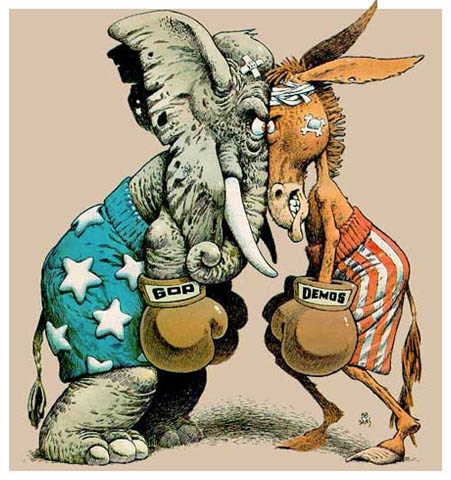The state's plan to build a bullet train has become a monument to the ways poor planning, mismanagement and political interference can screw up major public works.Those words can be echoed across the Country in cities and towns where public works projects get messed up with political interference. That is how we got the road to nowhere in South Texas and other places. The interchange was built with no place to go. Give a politician money to spend on infrastructure and watch it get messed up by their political appointments to run the project.
Seeing it my own small city with the underpass for the railroad tracks. They let the contractor try to reuse a bridge but it wouldn't fit and had other problems so now the project is behind schedule which drives up costs but nothing on the scale of the bullet train.
With the strings attached by the Federal Government, this project is doomed to failure. With having to break ground in 2012 in time for Obama's reelection campaign, the timetable is all off and dooms the project thanks to Obama and his desire for publicity about high speed rail.
We could actually see it working from LA to SF if they didn't make so many stops. We have a suggestion -- put the monorail engineers of Disney on the project! The rendition drawing even looks somewhat like the Contemporary Hotel station at Disney World for the monorail.
The idea to have high speed rail in the middle of the country is a non-starter and way too expensive. It is meant for travel in places like from LA to SF and NYC to DC. That is where you would attract the passengers to pay for the costs.
California's high-speed train wreck
The state's plan to build a bullet train has become a monument to the ways poor planning, mismanagement and political interference can screw up major public works. We can do better.

An artist's rendering of the proposed San Jose stop on the $43-billion high-speed rail line. (California High-Speed Rail Authority / Bloomberg)California's much-vaunted high-speed rail project is, to put it bluntly, a train wreck. Intended to demonstrate the state's commitment to sustainable, cutting-edge transportation systems, and to show that the U.S. can build rail networks as sophisticated as those in Europe and Asia, it is instead a monument to the ways poor planning, mismanagement and political interference can screw up major public works. For anti-government conservatives, it is also a powerful argument for scrapping President Obama's national rail plans, rescinding federal funding and canceling the project before any more money is wasted on it.
We couldn't disagree more. We pointed out back in 2008, before voters approved nearly $10 billion in state bonds to fund the project under Proposition 1A, that it would be more expensive and difficult to build than its backers were letting on. But we endorsed it anyway because of the economic and environmental benefits the train could bring. The benefits still outweigh the costs, and none of the $43-billion project's troubles are insurmountable. Fortunately, a report last week from the state Legislative Analyst's Office offers strong recommendations for getting the system back on track.
The train's biggest problems can be laid at the feet of the High Speed Rail Authority, which is overseeing its construction. Inexperienced board members appointed by the governor and Legislature on the basis of political patronage rather than expertise have made a host of poor decisions. Not the least boneheaded of these is the board's plan to take a circuitous route from Los Angeles to Bakersfield by veering through Palmdale and Lancaster. Compared with the more direct route along Interstate 5 through the Grapevine, this would add 30 miles to the trip plus $1 billion in construction costs, and make it all but impossible for the train to meet its promised travel time of 2 hours and 40 minutes from L.A. to San Francisco. The legislative analyst calls for slashing the authority's proposed budget for next year by $185 million and eventually eliminating it, transferring the bullet train's oversight to another agency. We heartily agree.
Not all of the bad decisions can be blamed on the rail authority. To qualify for federal funds, planners had to agree to break ground by 2012. With political battles raging throughout the state over routing decisions, federal officials deemed that the only segment that would be ready for construction so quickly was in the sparsely populated Central Valley. As a result, the bulk of the $3.5 billion kicked in by the Obama administration must be spent on a train running between the tiny towns of Borden and Corcoran. Ridership on this initial segment would be slight, making it impossible to operate the train without taxpayer subsidies. Yet under the terms of Proposition 1A, the state can't issue bonds to pay for the project unless it has been demonstrated to be self-sufficient. What's more, if federal and other funds for further construction dry up, California could end up with an expensive train to nowhere.
Excerpt: Read More at LA Times Editorial





No comments:
Post a Comment